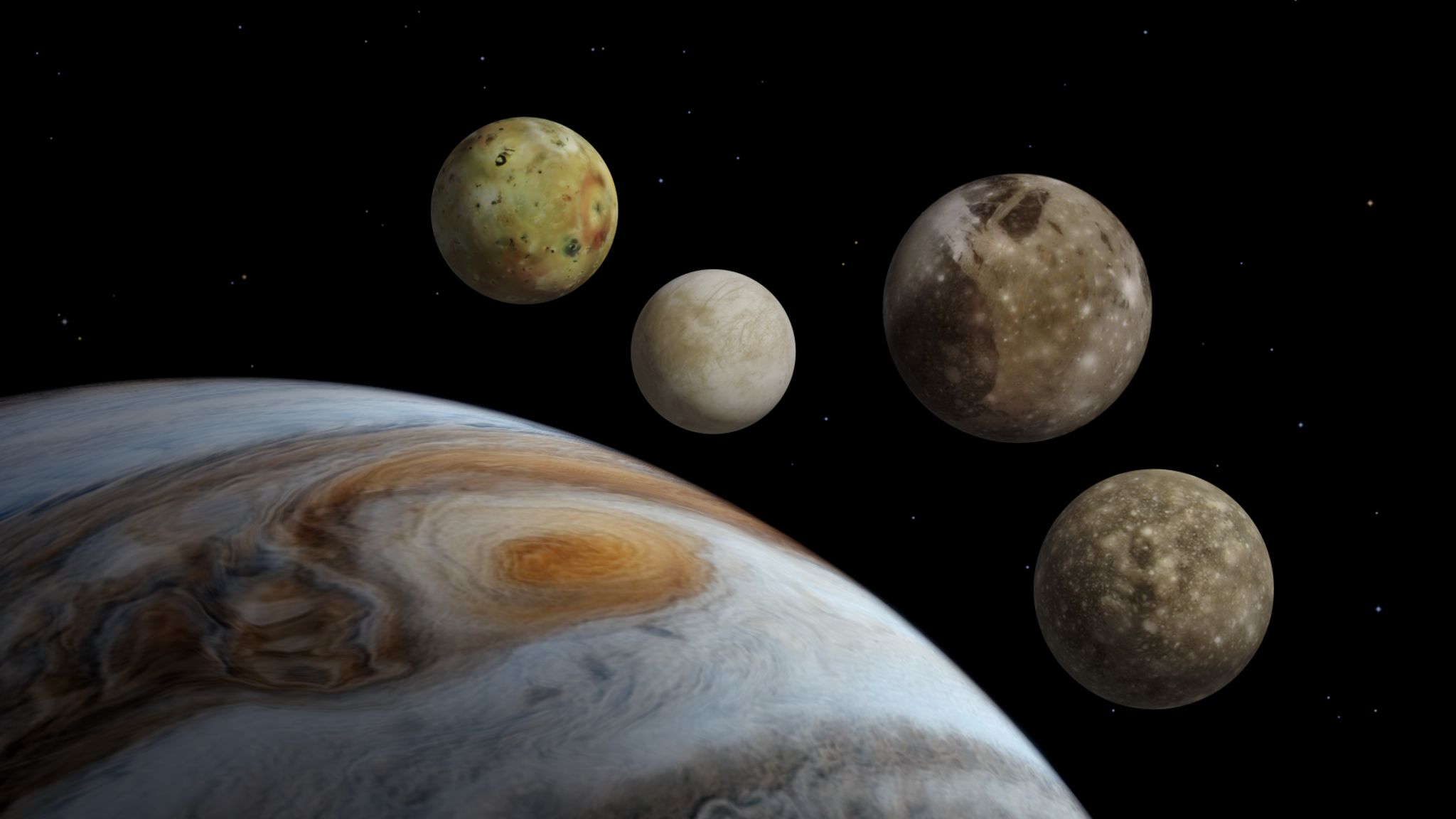Jupiter’s Moons and Bright Stars to Observe
Head outside late this week and you won’t miss Jupiter.
The giant planet will rise in the east just before 11 pm local time. It’s gradually making its way into position for summer evening stargazing. For now, Jupiter will reach its highest point over the southern horizon at about 3:30 am local time and then descend towards the west as dawn arrives. Jupiter shines at magnitude –2.5, which makes it the brightest point of light in the sky. If you’d like to see the famous Great Red Spot in your telescope, it will be on the side of Jupiter that faces Earth around midnight on Wednesday. The rest of the time, you can look for the four bright Galilean moons arrayed to either side of Jupiter. Sometimes you’ll only see two or three of them if the rest are hidden by Jupiter itself.
With the moon getting full this week, only the brighter stars will remain visible using unaided eyes. Facing west after sunset, look low in the sky for the bright yellowish Capella in Auriga (the Charioteer). A little higher, and to the east (left), is the matched pair of stars Castor (on the right) and Pollux (on the left) in Gemini (the Twins). Directly overhead, you can look for the seven bright stars of the Big Dipper.
Swinging around to the southeast, and looking up the sky, you’ll find yellow-orange Arcturus, the brightest star in Boötes (the Herdsman). Finally, climbing the northeastern sky is Vega, in Lyra (the Harp). To Vega’s lower left is another bright star named Deneb. These two stars are the first corners of the Summer Triangle asterism to appear. And that tells us that summer will soon arrive in the Northern hemisphere!
On Wednesday evening, the moon will land among the stars of Virgo (the Maiden). Look for Virgo’s brightest star Spica sitting less than an outstretched fist’s diameter below the bright and nearly full moon. Your unaided eyes are unlikely to pick out the rest of Virgo’s dimmer stars – but binoculars will reveal them.
On Friday night, the very bright moon will land between the two brightest stars of Libra (the Scales). The fairly bright star to the moon’s upper left is called Zubeneschamali “the Northern Claw”, while the star to the moon’s lower right is Zubenelgenubi “the Southern Claw”. Those two stars used to be considered part of Scorpius (the Scorpion).
Happy Stargazing!
